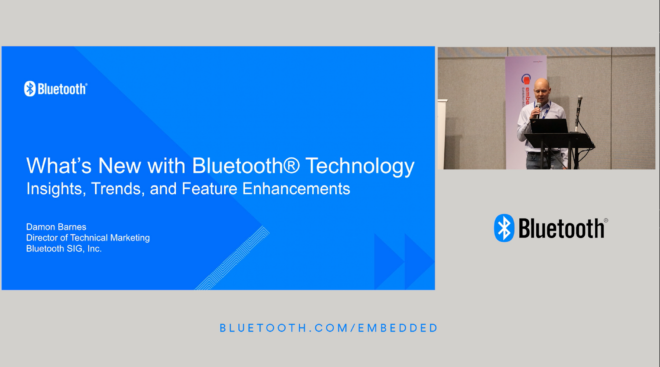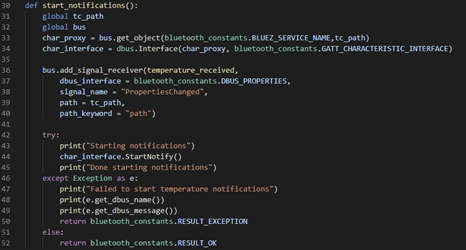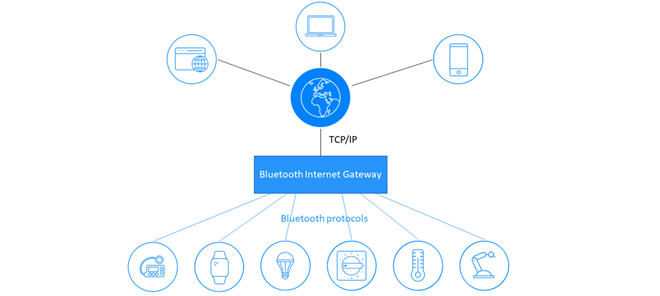Bluetooth® technology has been around for more than 20 years. Initially created to allow two devices to exchange data wirelessly without the need for any other intermediate networking equipment, it quickly found a role in products such as wireless mice and hands-free kits for cars. The latter is an audio product, and audio proved to be the killer app for this original version of Bluetooth technology. It continued to be so for many years.
This first version of Bluetooth technology, used in those very first ever Bluetooth products, is known more formally as Bluetooth BR (Basic Rate). It offered a raw data rate at the physical layer of 1 million bits per second (1 mb/s).
Later, a faster version of Bluetooth technology known as Bluetooth BR/EDR (Enhanced Data Rate) was defined. It offered a raw data rate of 2 mb/s but was still designed for use cases involving two devices exchanging data directly between them.
Bluetooth Low Energy (LE) first materialized in Bluetooth Core 4.0. This was a new version of Bluetooth® technology, which rather than replace its predecessor, Bluetooth BR/EDR, sat alongside it as an alternative with capabilities and qualities that made it perfect for a new generation of products and the ability to meet new and challenging technical and functional requirements.
Getting Started with Bluetooth Low Energy
If you’re new to Bluetooth® Low Energy (LE) and want to understand its constituent parts, features, and how it works, where’s the best place to start? This is a large topic and the primary reference specification, the Bluetooth Core Specification, is a substantial and formal document and not necessarily an optimal place for a beginner to start learning.
The Bluetooth Special Interest Group (SIG) has created a collection of educational resources aimed at assisting technical professionals to ascend the learning curve associated with Bluetooth LE. They’re referred to as study guides, and they cover both the theory and hands-on practical implementation issues of the technology in general and as it appears on various popular platforms.
Today, we’re excited to announce that a new study guide known as The Bluetooth LE Primer has been released.
The Bluetooth Low Energy (LE) Primer systematically explains each and every one of the layers of the Bluetooth® LE stack, starting with the physical layer at the bottom and ending with the generic access profile at the top. Topics that are orthogonal to the layered architecture of the stack, such as security, are covered too.
The Bluetooth® Low Energy (LE) Primer is intended to explain key aspects of Bluetooth technology at a technical level but without being overly verbose and lengthy. It’s not War and Peace and should work well both in supporting an initial foray into the world of Bluetooth LE and as a quick reference too. It provides pointers to other study guides, papers, and formal specifications so that it’s as easy as possible to navigate the extensive collection of related resources provided by the Bluetooth SIG.
![]()
FEATURED STUDY GUIDE
Bluetooth® Low Energy Primer
Are you new to Bluetooth Low Energy (LE)? The Bluetooth® LE Primer explains key aspects of Bluetooth LE technology at a technical level. It also provides references to other study guides, papers, and formal specifications, making it as easy as possible to navigate the other Bluetooth SIG related resources.






























